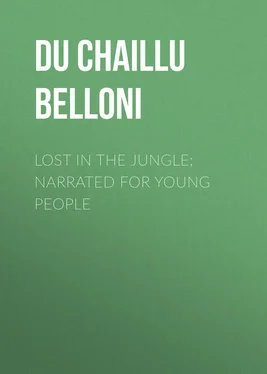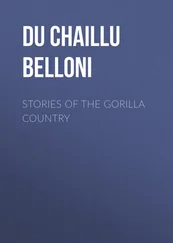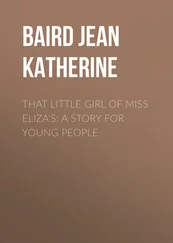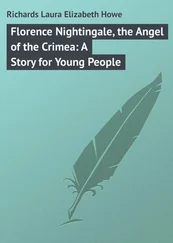Paul Du Chaillu - Lost in the Jungle; Narrated for Young People
Здесь есть возможность читать онлайн «Paul Du Chaillu - Lost in the Jungle; Narrated for Young People» — ознакомительный отрывок электронной книги совершенно бесплатно, а после прочтения отрывка купить полную версию. В некоторых случаях можно слушать аудио, скачать через торрент в формате fb2 и присутствует краткое содержание. Жанр: foreign_antique, foreign_prose, Путешествия и география, на английском языке. Описание произведения, (предисловие) а так же отзывы посетителей доступны на портале библиотеки ЛибКат.
- Название:Lost in the Jungle; Narrated for Young People
- Автор:
- Жанр:
- Год:неизвестен
- ISBN:нет данных
- Рейтинг книги:4 / 5. Голосов: 1
-
Избранное:Добавить в избранное
- Отзывы:
-
Ваша оценка:
- 80
- 1
- 2
- 3
- 4
- 5
Lost in the Jungle; Narrated for Young People: краткое содержание, описание и аннотация
Предлагаем к чтению аннотацию, описание, краткое содержание или предисловие (зависит от того, что написал сам автор книги «Lost in the Jungle; Narrated for Young People»). Если вы не нашли необходимую информацию о книге — напишите в комментариях, мы постараемся отыскать её.
Lost in the Jungle; Narrated for Young People — читать онлайн ознакомительный отрывок
Ниже представлен текст книги, разбитый по страницам. Система сохранения места последней прочитанной страницы, позволяет с удобством читать онлайн бесплатно книгу «Lost in the Jungle; Narrated for Young People», без необходимости каждый раз заново искать на чём Вы остановились. Поставьте закладку, и сможете в любой момент перейти на страницу, на которой закончили чтение.
Интервал:
Закладка:
We have had some very hard times, but splendid hunting; and on the evening of that day of which I speak, we were quietly seated somewhere near the left bank of the River Ovenga, by the side of a bright fire, and, at the same time my men enjoyed their smoke, we talked over the future prospects of our life in the forest.
That evening I said, "Boys, let us go into the forest and look for ebony-trees; I want to find them; I must take some of that wood with me when I go back to the land of 'the spirits.'" Malouen, Gambo, and Querlaouen shouted at once, "Let us go in search of the ebony-tree; let us choose a spot where we shall be able to find game." For I must tell you that good eating was one of the weak points of my three friends.
The ebony-tree is scattered through the forest in clusters. It is one of the finest and most-graceful among the many lovely trees that adorn the African forest. Its leaves are long, sharp-pointed, and of a dark green color. Its bark is smooth, and also a dark green. The trunk rises straight as an arrow. Queer to say, the ebony-tree, when old, becomes hollow, and even some of its branches are hollow. Next to the bark is a white "sap-wood." Generally that sap-wood is three or four inches thick; so, unless one knows the tree by the bark, the first few blows of an axe would not reveal to him the dark, black wood found inside. Young ebony-trees of two feet diameter are often perfectly white; then, as the tree grows bigger, the black part is streaked with the white, and as the tree matures, the black predominates, and eventually takes the place of the white. The wood of the ebony-tree is very hard; the grain short and very brittle.
You can see that it is no slight work to cut down such big trees with the small axes we had, such as represented in the accompanying drawing. I show you, also, the drawing of a mpano, which is the instrument used in hollowing out the trunks of trees to make canoes.
After wandering for some hours we found several ebony-trees. How beautiful they were, and how graceful was the shape of their sharp-pointed leaves! These trees were not very far from the river, or I should rather say from a creek which fell into the Ovenga River, so that it would not be difficult to carry our ebony logs to the banks and there load them on canoes.
We immediately went to work and built a nice camp. We had with us two boys, Njali and Nola, who had been sent with a canoe laden with provisions from one of Querlaouen's plantations, and which his wife had forwarded to us. Some bunches of plantains were of enormous size. There were two bunches of bananas for me, and sundry baskets of cassava and peanuts. There was also a little parcel of dried fish, which Querlaouen's wife had sent specially to her friend Chally.
We set to work, and soon succeeded in felling two ebony-trees. We arranged to go hunting in the morning, and cut the wood into billets in the afternoon. As we were not in a hurry, and it was rather hard work, we determined to take our time.
By the side of our camp we had a beautiful little stream, where we obtained our drinking water, and a little below that spot there was a charming place where we could take a bath.
Not far from our camp there was a creek called Eliva Mono (the Mullet's Creek), so named on account of the great number of mullets which at a certain season of the year come there to spawn. Besides the mono, the creek contained great numbers of a fish called condo. Large and tall trees grew on the banks of the creek.
This creek was at that time of the year a resort for the large fish-eagles. These birds could look down from the tops of the high trees, on which they perched, upon the water below, and watch for their finny prey.
The waters of the creek were so quiet that half the time not a ripple could be seen on them. High up on some of the trees could be seen the nests belonging to these birds of prey.
There were several eagles, and they belonged to two different species. One was called by the natives coungou , and was known all over the country, for it is found as far as the sea. Its body was white, and of the size of a fowl, and it had black wings, the spread of which was very great, and the birds were armed with thick and strong talons. The females were of a gray color.
Another eagle was also found on the creek. It was a larger bird, of dark color, and called by the natives the compagnondo ( Tephrodornis ocreatus ). The shrill cries of this bird could be heard at a great distance, sounding strangely in the midst of the great solitude. Both these eagles feed on fish, and two of the coungous had their nest on the top of a very high tree, and in that nest there were young ones. The nest was built, like most of the fish-eagles' nests, with sticks of trees, and occupied a space of several feet in diameter. When once the nest is built it is occupied a good number of years in succession. It is generally placed between the forks of the branches, and can be seen at a great distance. Each year the nest requires repairs, which both the male and female birds attend to. These coungous seemed very much attached to each other. After one of a pair had been shot, I would hear the solitary one calling for its mate, and it would remain day after day near the spot, and at last would either take another mate or fly off to another country. When a pair of coungous, male and female, were killed, then the next year another couple would take possession of their nest.
I often watched the coungous' nest. They were always on the look-out for fish. Now and then they would dive and seize a fine mullet, which they would carry up to their young and feed them. How quick they were in their motion! Sometimes one would catch a fish so big and heavy that it seemed hardly strong enough to rise in the air with it. The natives say that sometimes the eagles are carried under the water when they have caught a fish too big for their strength, and from whose body they can not extricate their firmly-fixed talons before the fish dives to the bottom.
When the old birds approached the nest with food the young ones became very noisy, evincing their impatience for the treat of fresh fish, with which the parents sometimes hovered over the nest as if desirous of tantalizing their appetite.
One day I took it into my head to have the tree cut down, so that I could examine the nest. The old birds were greatly excited, for they saw that something was wrong. At last the tree fell with a great crash. I immediately made for the nest, and I can not tell you what a stench arose from it; it was fearful. Remnants of decayed fish and many other kinds of offal made a smell which it was surprising the young eagles could endure. In the mean time the young ones had tumbled out of the nest, and while we were looking for them, and just after I had captured one, the parents came swooping down. Goodness! I thought I was going to be attacked by them, for they hovered round, sometimes coming quite close to me; once or twice I thought my hat at least would be carried off. Becoming worried, I raised my gun and fired, and killed the male; then the female got frightened and flew away. The young were covered with gray down. They must certainly possess very limited powers of smell, for I can not see how any living thing could exist in the midst of such odors.
On one of my excursions up the creek I discovered another coungou nest, and, as it was not built in a very high tree, I determined to examine its economy. So, with pretty hard work, I climbed up another tree, from whence, with the aid of my field-telescope, I could watch all that went on in the nest, which contained two young eagles. During the first few days the old birds would feed their young by tearing the flesh of the fish with their beaks, while their talons held it fast. When the coungous are young, the male and female have the same gray plumage, which in the male turns white and black when old.
Читать дальшеИнтервал:
Закладка:
Похожие книги на «Lost in the Jungle; Narrated for Young People»
Представляем Вашему вниманию похожие книги на «Lost in the Jungle; Narrated for Young People» списком для выбора. Мы отобрали схожую по названию и смыслу литературу в надежде предоставить читателям больше вариантов отыскать новые, интересные, ещё непрочитанные произведения.
Обсуждение, отзывы о книге «Lost in the Jungle; Narrated for Young People» и просто собственные мнения читателей. Оставьте ваши комментарии, напишите, что Вы думаете о произведении, его смысле или главных героях. Укажите что конкретно понравилось, а что нет, и почему Вы так считаете.












